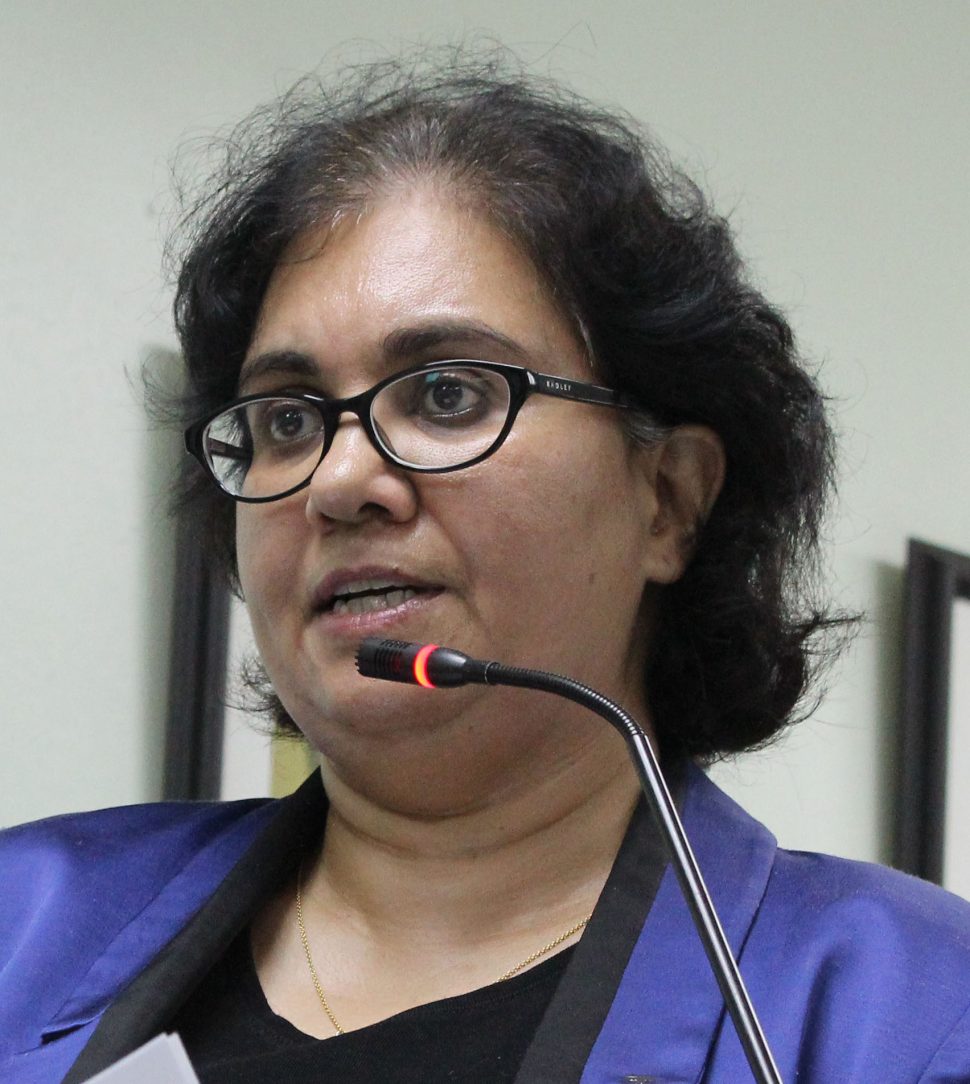Attorney Melinda Jankie has expressed concern that the liability coverage submitted by ExxonMobil for its Liza Phase 2 operations in the Stabroek Block offshore Guyana is not enough but Environmental Protection Agency (EPA) head Dr Vincent Adams has reiterated that it meets global industry standards.
It is for this reason that the EPA will grant the permit needed for the project, he said. “It satisfied coverage to industry standards,” Adams reiterated yesterday.
Yesterday’s Sunday Stabroek reported that ExxonMobil is expected to receive its permit from the EPA this week for its Liza Phase 2 operations after assuring the agency that it could cover the liability in the event of an oil spill. The EPA had previously expressed concern that ExxonMobil’s subsidiary, Esso Exploration and Production Guyana Limited (EEPGL), which with partners CNOOC and NEXXEN are in a production sharing agreement with the government of Guyana, had applied for the Liza Phase 2 permit but did not show evidence that it was financially capable of absorbing the liabilities from an offshore spill. Having satisfied itself on the matter, the EPA is now prepared to grant the permit.
The Sunday Stabroek report had said that ExxonMobil submitted proof of insurance coverage of up to US$2 billion through a United Kingdom company.
However, making reference to British Petroleum’s (BP) 2010 Deepwater Horizon spill which, up to last year, cost the company over US$65 billion, Jankie pointed to EEPGL’s financial statements for 2015 saying that it was not enough. As at December 31st 2015, EEPGL’s total assets stood at $11,311,566,872 with total equity and liabilities at the same amount. Total expenditure incurred in 2015 was $9,616,817,162. Cash and cash equivalent at the end of the year totalled $56,859,564.
But Adams pointed out that on careful analysis, persons would understand that it was for the same reason that the EPA asked ExxonMobil to provide coverage for its subsidiary, which it did.
“The final permit was with the EPA for some months but we had one main issue and that is the liability to cover oil spills, etc. I have had several meetings with both [Head of the Department of Energy (DoE) Dr Mark Bynoe] and his staff and EEPGL and [EEPGL Country Manager] Rod Henson and his folks. The issue was liability to cover any type of spills, as I said. So Rod sent me correspondence to that issue. We wanted to see insurance coverage or liability transfer up to the parent company [ExxonMobil]. The stall in them getting it was because we weren’t convinced or saw satisfactory evidence presented for insurance that EEPGL on its own, through its assets, [could] take care of an oil spill or any accident of that magnitude with its current limited assets. The key was in the document clause it says ‘EEPGl will cover the liability,’ except it didn’t say by insurance or how. We wanted specificity as to how it would be covered,” Adams had explained.
“The one thing I have been asking is: ‘What is the international standard? And if that standard would be used here?’ We are not asking out of the ordinary. All we want to have is what are they required to do for the developed countries and we should not expect or will accept anything less. In the application for the permit, there wasn’t evidence presented to satisfy the requirements for insurance and the key was in the clause for liabilities where it said EEPGL will cover. EEPGL is a limited liability company, they do not have the assets to cover. They are a subsidiary of ExxonMobil as everyone knows. Verbally, I was given the assurance that ExxonMobil pick up and they have insurance and all of that. But you have to understand that in business getting documentation is key. Yes, putting it in black and white. I wanted specificity as to how it would be covered by insurance. You say, ‘Oh, it will,’ then fair enough, show me in writing exactly how and state by insurance. I wanted documented assurance by seeing insurance,” he added.
In relation to the reported proof of insurance coverage of up to US$2 billion submitted by ExxonMobil, Adams, a former manager at the United States Department of Energy, said it is known that in the industry, no insurance company would provide US$65 billion in coverage and it was why general industry standards were asked for. Coverage is first met by insurers in the event of a spill or other accident, and the company takes on the remainder.
He had last week explained that Henson has assured that the company will meet industry standards and has been cooperating with the EPA to submit documents to support its pledge.
“He and his team have been very cooperative. There were other questions also and they fixed those… They have been working with the EPA to get this done and I must highlight that. I don’t want people to think that they were resistant because they were not,” he said.
“They have also committed to working with us because Liza 1 was already granted and doesn’t have the wording so we are seeing what we can do there because we want consistency. I am talking to my legal people and I talked to Rod. The company, I must tell you, understands where we are coming from because they are in this business. They understood the need for documentation and provided that fully. I have spoken to Rod on if it would be possible to do an addendum to Liza 1. We would look at the language in Liza 1, because I wasn’t here then, and see if we can fix that. They have indicated that should not be a problem,” he added.
Adams said that going forward, oil spill liability coverage must be clearly covered in all documentation for permits.





